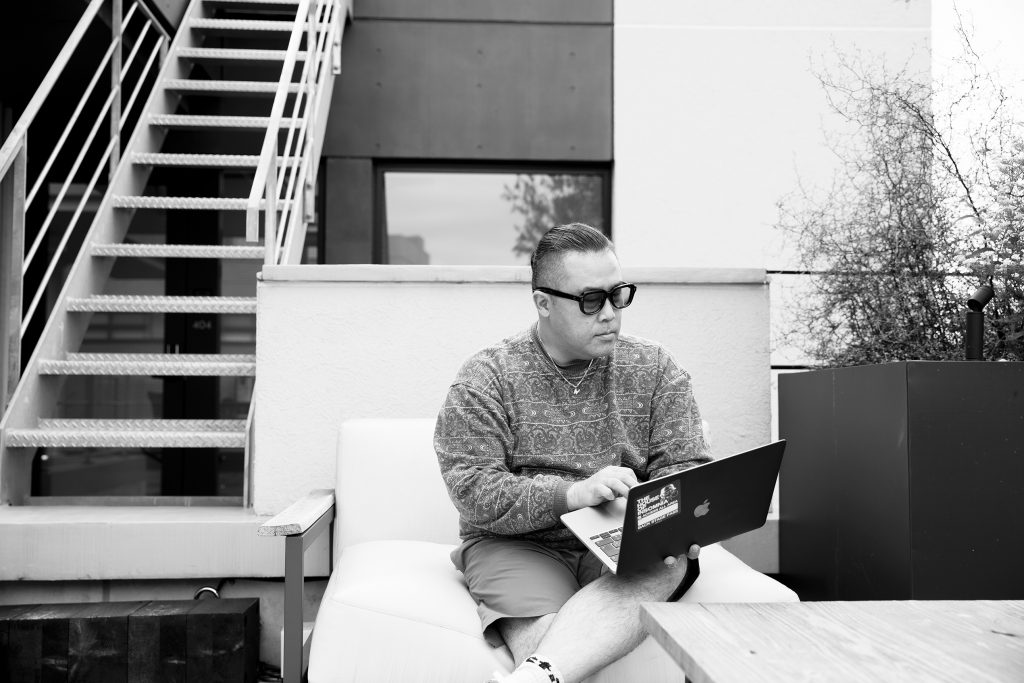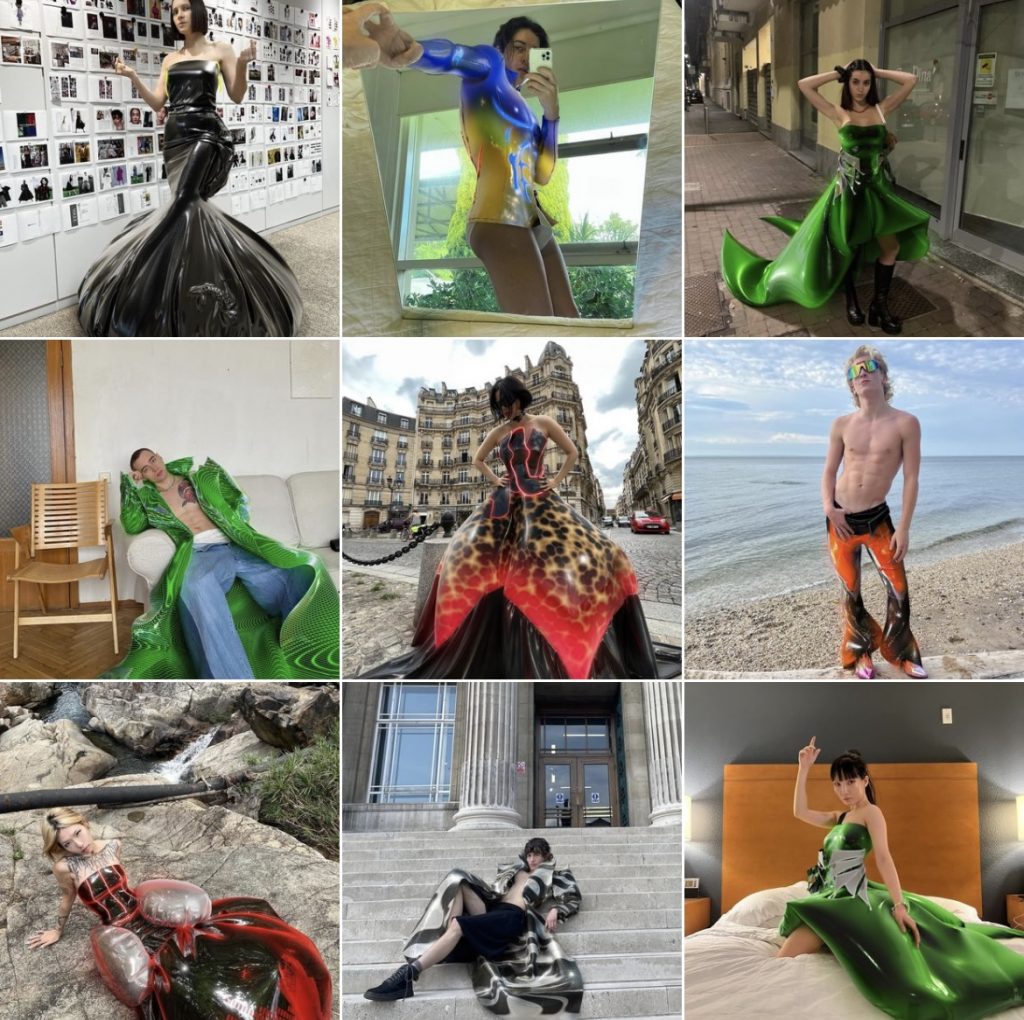Interview with Akihiro "Wazzy" Wajima on Web 3.0 and NFT
Part 1: Is digital fashion the ultimate sustainability?
It was only last year that we often began to see and hear keywords such as NFT and Web3 (3.0). While related books are piled up in bookstores and the art and they are spreading in the world of art and entertainment, the fashion scene is still in its infancy. HONEYEE.COM caught up with Akihiro "Wazzy" Wajima, producer of KREATION, Inc, a start-up company involved in fashion x NFT in Japan, to find out more. The rich and in-depth content of this interview will run through three parts: Part 1, Part 2 and Part 3. Through this interview, you would probably become more interested in fashion NFT. In the first part, we discuss the current state of digital fashion.
Interview & Text Yukihisa Takei
Photo Kiyotaka Hatanaka
Hiroaki “Wazzy” Wajima
Born 1974 in Tokyo, Japan, he is President (COO / FOUNDER) of KREATION, Inc. After graduating from the School of Architecture at Arizona State University, USA, he worked for an advertising agency, The SAZABY LEAGUE and Rakuten before launching Farfetch Japan in 2014. After his role as president of HYPEBEAST JAPAN's Japanese subsidiary, he launched KREATION, Inc. in 2021. He is highly knowledgeable in men's fashion, NFT and Web 3.0.
Twitter: @wazzykreation
Instagram: @wazzykreation

A Huge Market Found Through Fortnite

- Wazzy-san, you are now involved in various NFT projects, but when did you first realise that they existed and that they were fascinating?
Wazzy (W): It was 2021. I knew that Bitcoin was rising in value and that NFT was upcoming, but I became aware through my son that the market for skins (outfits) and using them as avatars in 'Fortnite' is huge. About 30 billion yen worth of skins are sold every month worldwide, and my son even asked me for pocket money in the currency called V-BUCKS, which is the in-game currency used in 'Fortnite' (laughs).

https://www.instagram.com/fortnite/
- I didn’t know that's what's happening right now.
W: Fortnite is basically free-to-play and anyone can start with zero money. You can change the skin of your avatar, so people start doing in-game purchases from there.
- So, you saw the potential for fashion there?
W: That's right. But for Fortnite, the skins are made by their in-house graphic designers. We wanted to try and see how it would work if a fashion designer makes skins, but it's only open to a few brands. However, with today's teenagers and those in their 20s no longer buying real clothes, we assumed that this kind of digital collective would become the mainstream of fashion in the next 10 to 20 years. The NFT development is just the result, I guess.
A Reverse of Real Clothes and Metaverse?
- What do you mean when you say that today's teenagers and 20s are not buying real clothes?
W: I think a lot of teenagers and 20s today are probably bored with clothes already. They are consumed by video games and other subscriptions, so they have less money to spend on clothes. And they can get good stuff for cheap, like UNIQLO and H&M.
- So, you're saying that they can dress reasonably well without the hassle?
W: And for their generation, it's way cooler to express themselves by dressing up in a metaverse, rather than in a reality. I think their value is completely different from our generation.
- But Wazzy-san, you like real clothes, don’t you (laughs)?
W: Yes, that's true (laughs). I personally like to buy real clothes. However, I am now in a position to show people new things, so I am also practising those digital things on my own.
- We are just now at the boundary of the times.
W: The other day my son was playing Fortnite and he said, "This skin is cool!" then he sent it to me, and it was Jordan Brand. It's a skin with the Jumpman logo on it, and I bought it for him and he was happy. He didn't even know Jordan Brand before, but he found out about it on Metaverse and thought it was cool. And now he's happy to get a real Air Jordan in his hand. The younger generation doesn't buy clothes because they're bored, but also because the order is changing: they know about fashion in a digital world first, and then they learn about it in real life.
- That’s Interesting. Your son didn’t know Jordan Brand is a real thing.
W: Of course, the enjoyment and entertainment of owning the real thing will remain, but the touchpoints are changing.
Digital Fashion Is the 'Ultimate Sustainability'

- You've been working in the fashion industry for a long time, but is there a point in the future where you thought fashion NFT would grow more than real fashion?
W: Rather than simply Fashion x NFT, I think there is a strong affinity between digital fashion in the Metaverse and real fashion. What triggered this was a service called TRIBUTE BRAND based in Europe. When you go to their website, they sell digital clothes, and if you buy them for about $80, they ask you to send them a photo of yourself. Then they edit that photo with a graphic of you wearing the clothes you bought and send it back to you, and that's their product.

From TRIBUTE BRAND Official Website
https://tribute-brand.com
- It's interesting but you can't own that cloth though?
W: But you can still "own" it as data. It never goes into production, there is no physical product, but it satisfies the user's demand. In the current context of fashion, there is a whole process of presenting a collection, doing an exhibition, displaying them in a retail store, the customers who buy products take photos of themselves wearing them, and then sooner or later it is disposed of. But this service offers the 'beginning and the end'.
- I see.
W: Moreover, it allows for creations that cannot be achieved in two dimensions. There is no gravity or need to use fabric, in other words, it's between graphics and reality, between 2D and 3D. This is very new. One of the current fashion trends is ‘sustainable’ and this is the ultimate sustainable fashion. Fashion brands have reached a point where they don't have to make physical clothes. I believe this system works even for existing high-end brands.
- KREATION also launched a fashion collaboration NFT in 2021. What was the process like back then?
W: The NFT collection called Bored Ape Yacht Club was launched in March 2021, and the floor price on OpenSea was 10 or 20 million yen per figure, which is when NFT really started to boom. The first art NFT called CryptoPunks was also booming, and the rapid expansion of the market and the rise in the value of virtual currencies started to link up, so I thought this is definitely coming.


https://boredapeyachtclub.com/
https://www.instagram.com/boredapeyachtclub/

- Then you started approaching fashion brands?
W: Yes, I asked TENDER PERSON and Maison MIHARA YASUHIRO to create 3D skins. They drew patterns and we used the technology to combine them into a 3D model, which I thought was very different from what fashion designers do. A lot of fashion designers are not integrated into the digital system. I don't know if it's pride or just because it's a different field, but it was in early 2021 that I realised that we were the only ones who could fill the gap between the two.


https://www.instagram.com/boredapeyachtclub/
https://www.instagram.com/kreationdigital/
(Continued in Part 2)
